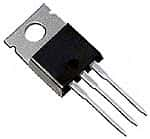Power switches are most commonly in demand for their simplicity in turning on and off a voltage rail or for protecting a power path. Engineers find load switches easier to use compared to discrete power MOSFETs. For complete power protection of the system, eFuses offer an integrated approach. The combination of load switches and eFuses offers more than significant PCB space savings. Compared to discrete circuits, the combination of load switches and eFuses, also known as integrated switches, offers substantial improvements in performance, while resolving common power management challenges such as faster current limiting, detecting, and responding to mistakes in field wirings, and improving battery life and power density.
In fact, using the right integrated switch helps to reduce EMI and heat generation, while improving the power efficiencies to 90%. Bad power management leads to several side effects such as the generation of excess heat, electromagnetic interference, inaccurate voltage control, and these can lead not only to poor device performance but even to its outright failure. For the above reasons, designers are using integrated switches in electronic equipment such as desktop computers, LCD TVs, and plasma TVs.
Using integrated power switches offers several advantages over solutions of discrete controller and MOSFET. The loser component count leads to lower cost and higher reliability.
With electronic products shrinking in size, PCB space is almost always at a premium. The integrated power switch with its lower footprint has a better advantage over discrete components. Several manufacturers offer a variety of integrated power switches, and these include Fairchild Semiconductors, Power Integrations, ON Semiconductors, and ST.
Fairchild Semiconductor offers their new Green FPS e-Series of integrated switches as a replacement for conventional, flyback converters using hard switches. The new e-Series are a versatile set of devices for improving efficiency by reducing switching losses in the MOSFET with quasi-resonant operation.
It is also possible to use the e-Series in the continuous conduction mode or CCM in fixed frequency operations. The design offers simplicity and lowers the ripple current. Using an advanced burst mode technique, devices of the e-Series also conform to several governmental agency requirements for standby efficiency.
Fairchild uses a prefix of FSQ in the part number of these devices, and they are available for applications that can deliver up to 90 W. Depending on the requirement, it is possible to avail the series in seven different packages including DIP, TO-220F, LSOP, and others.
The devices use valley switching along with inherent frequency modulation for the quasi-resonant operation. The improves efficiency while reducing the EMI signature of the power supply. Valley switching uses the natural resonance of the primary inductance of the transformer and both circuit capacitance and parasitic capacitance for turning the MOSFET on only when the drain-to-source voltage is at its minimum. This reduces the amplitude of the current spike at turn-on typically found in hard-switched converters.
The increased efficiency from reducing the turn-on current spike also reduces the stress on the MOSFET. However, with valley switching, the power supply can operate with a variable switching frequency, changing with changes in the line and load conditions, helping to reduce the EMI the power supply generates.

